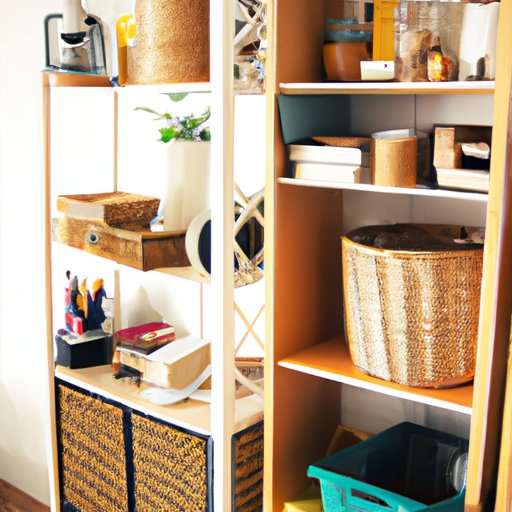
I. Introduction
Decluttering is the process of organizing and removing things that are no longer needed from our living spaces. It is not only about creating a clean and tidy living area, but it can also improve our physical and mental well-being. A cluttered environment can cause stress, anxiety and make it difficult to focus on what is important.
The purpose of this article is to provide you with a guide on how to declutter your living space without feeling overwhelmed.
II. Create a decluttering roadmap
Before starting the decluttering process, it is essential to have a roadmap. A roadmap will help you define your goals and create a plan of action. Start by identifying the areas of your home that need decluttering and create a list of tasks to accomplish.
Once you have your list, categorize your possessions into groups such as clothing, kitchen items, and decor. Next, decide on the disposal method for each category – whether it’s donating, selling, recycling, or throwing away. Lastly, stay organized throughout the process by labeling boxes and having a designated space for each category.
III. Use the six-month rule
One way to declutter is to use the “six-month rule.” This rule means that if you have not used an item in six months, it is time to let it go. Items that fall under this category are usually seasonal clothing, gadgets, or kitchen appliances.
Identify essential items that you regularly use and keep them organized. Creating room for new things that add value to your life can help improve your overall well-being.
IV. Implement the “one in, one out” rule
Another method to declutter is to implement the “one in one out” rule. This rule encourages you to donate, sell, or recycle one item for every new item you bring into your living space. Following this rule can help prevent clutter from building up over time.
V. Get creative with storage solutions
Maximizing available space is essential to keep clutter at bay. One way to do that is to get creative with storage solutions. Utilize under-bed storage, wall-mounted shelves, and integrated storage units.
Under-bed storage is perfect for storing out-of-season clothing or linens. Wall-mounted shelves are great for displaying decor and books, while integrated storage units can be customized according to your needs.
VI. Invest in quality, multi-purpose furniture
Invest in quality, multi-purpose furniture that can serve multiple functions. For example, a sofa bed is perfect for entertaining guests and can double as a bed for overnight stays. A footstool with built-in storage can help keep your living room organized while providing an extra seat for guests.
Minimizing the number of individual pieces of furniture in your home can help reduce clutter and make your living space more functional.
VII. Create a “donate” pile
Creating a “donate” pile helps make it easier to detach yourself from things you no longer need. Group items you no longer need into one pile to donate or sell. This method can help you feel good about giving back to your community while creating more space in your home.
VIII. Conclusion
In conclusion, decluttering your living space is essential for your physical and mental well-being. Creating a roadmap, using the six-month rule, implementing the “one in, one out” rule, getting creative with storage solutions, investing in quality, multi-purpose furniture, and creating a “donate” pile are all effective methods to declutter.
Start decluttering today and notice the positive effects it will have on your quality of life. Begin by tackling small tasks and work your way towards more significant projects. Remember, decluttering is not a one-time process; it is a continuous effort to keep your living space organized and clutter-free.




